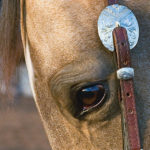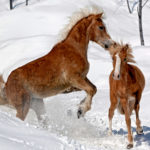27 June 2012
http://www.youtube.com/watch?v=ZpJMw5nmc4A
What role has World Horse Welfare played in preparing Greenwich Park–and the FEI–for the Olympics? William Fox-Pitt and Nicola Wilson of the British eventing team comment in this new video from the British-based charity that is embedded in FEI decision-making
As the Olympics open, TIME.com has published an article on the sport of eventing that paints the sport into a corner. They ask, is eventing the most dangerous sport in the Olympics? To answer that question, TIME turned to?Animal Aid, a British-based charity that has worked to ban whips in racing and publicized the deaths and risks associated with the Grand National steeplechase in England. Last month, Animal Aid challenged the Olympics’ plans to include animals in the pastoral portrait of rural Britain in the opening ceremony.?If TIME was looking for fuel for a controversial fire, they knew they would find it at Animal Aid. The TIME article does not mention all the work done on behalf of horse welfare in international horse sports by World Horse Welfare (WHW). Perhaps that is because WHW works from the inside. Consider this article and these videos the “glass half full” view of horse welfare advocacy in equestrian sports. A British-based international charity, World Horse Welfare has partnered with the Federation Equestre Internationale (FEI) for 30 years. The relationship between the two organizations is critical as we sit here on the eve of the eventing at the London 2012 Olympics. Will the hilly terrain prove to be too much for the sport horses? Will there be obstacles that over-challenge a horse’s ability to leap tall, wide, skinny or watery challenges in a single bouncing stride? We will soon find out. But one thing is for certain: World Horse Welfare will be on-site and working with Olympic and FEI officials to utilize information from Greenwich Park into plans for future eventing championships. http://www.youtube.com/watch?v=vD0WjQGE7fg

?
Why is World Horse Welfare involved in horse sport? Other organizations voice opposition to conditions horses encounter on the field of sport while WHW tries to improve them. Roly Owers explains how horse welfare works from the inside of horse sport in this video from?World Horse Welfare’s 2011 Conference
Sometimes, people are surprised to find out that World Horse Welfare has the FEI’s ear. The role of welfare advocates can be viewed as obstructive to some sports enthusiasts while there is no doubt that the contributions of welfare-based research into subjects like equine exercise physiology is of supreme importance to understanding how to improve performance and endurance of sport horses.
World Horse Welfare has been front and center on debates about hyperflexion (“rollkur”) in dressage, on the effects of heat and humidity at Olympic sites like Atlanta and Hong Kong, and on the FEI policies related to the use of medication for sport horses.
Princess Anne is president of the World Horse Welfare charity; top British eventer Pippa Funnell serves as a trustee of World Horse Welfare, as is British eventing gold medalist Jane Holderness-Roddam.
With the exception of the debate over medication, these situations have been more collaborative than confrontational, because a long-term relationship exists between the organizations. When the FEI or Olympics needs an answer to a horse-in-sport question, World Horse Welfare will often initiate research to find the answer and advocate policy based on that research. World Horse Welfare helped the FEI compose its current Code of Conduct for horse sport, which reads:
- ?At all stages during the preparation and training of competition horses, welfare must take precedence over all other demands. This includes good horse management, training methods, farriery and tack, and transportation.
- ?Horses and competitors must be fit, competent and in good health before they are allowed to compete. This encompasses medication use, surgical procedures that threaten welfare or safety, pregnancy in mares and the misuse of aids.
- Events must not prejudice horse welfare. This involves paying careful attention to the competition areas, ground surfaces, weather conditions, stabling, site safety and fitness of the horse for onward travel after the event.
- Every effort must be made to ensure that horses receive proper attention after they have competed and that they are treated humanely when their competition careers are over. This covers proper veterinary care, competition injuries, euthanasia and retirement.
With the Olympic eventers now prepared to ride out on World Horse Welfare’s home turf in London, the reputation of the welfare organization as the advocate of the horse, and of the FEI as the sport organization that “puts the horse first” are both on the line. Both organizations believe they are ready for circumstances that may arise and conditions that may exist. We’ll all be watching, as will their critics. Let’s hope that they’re right.





